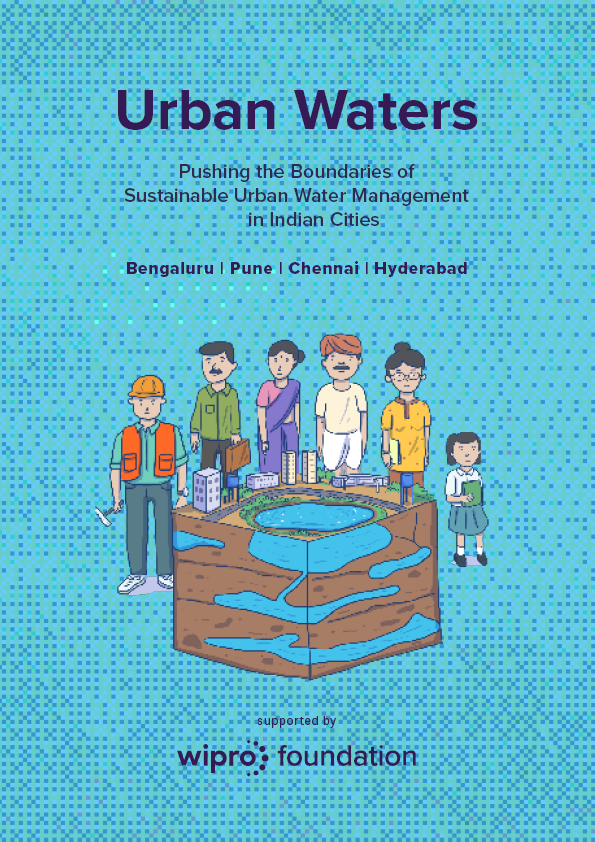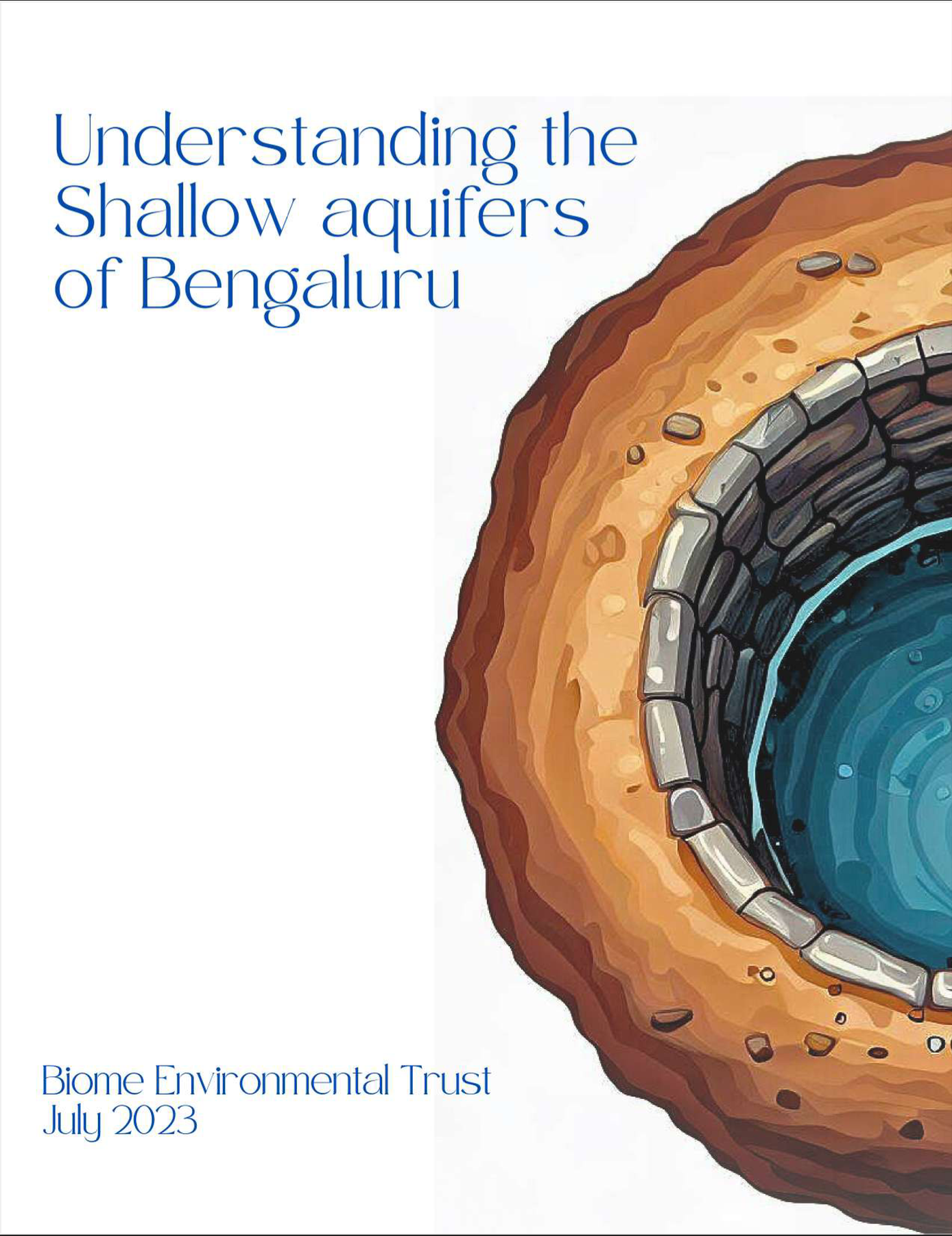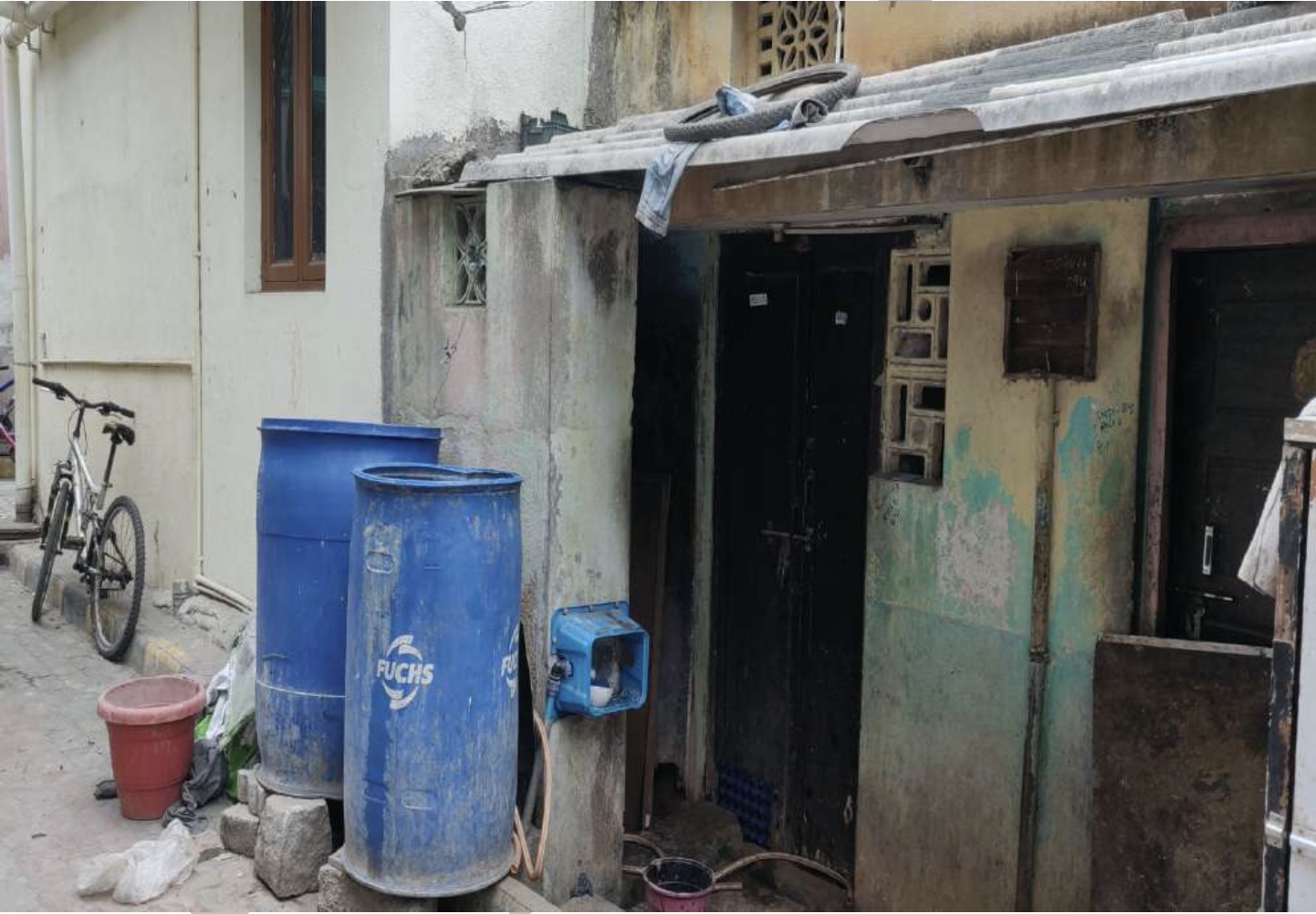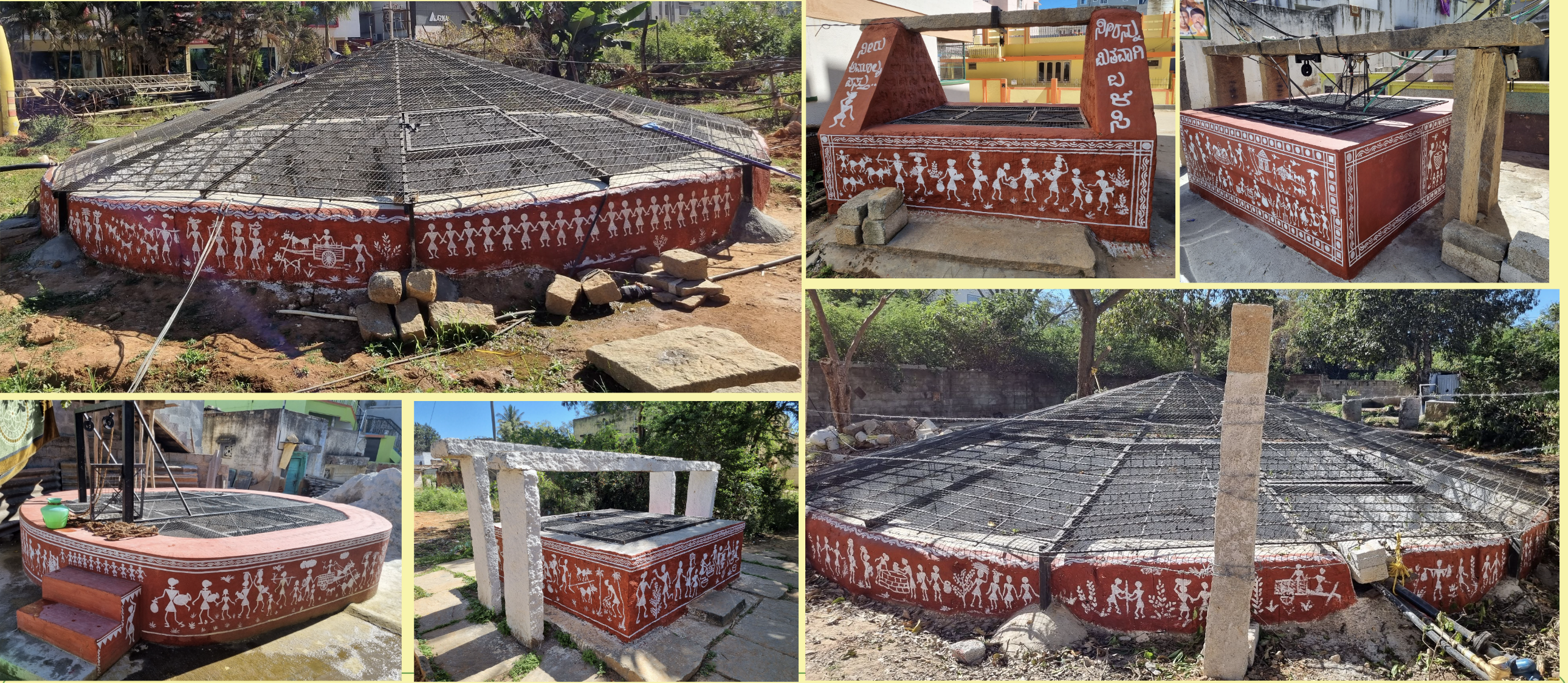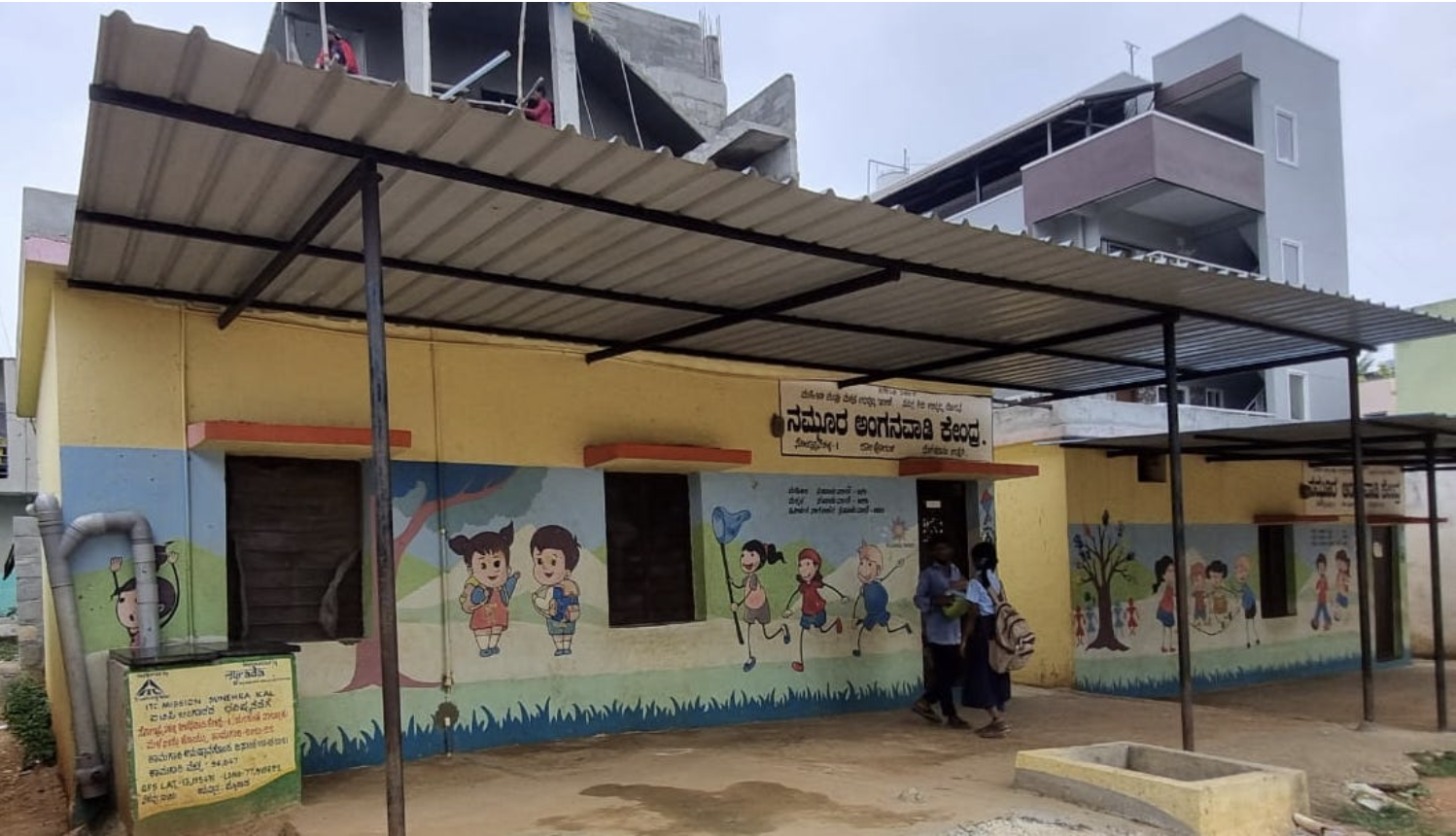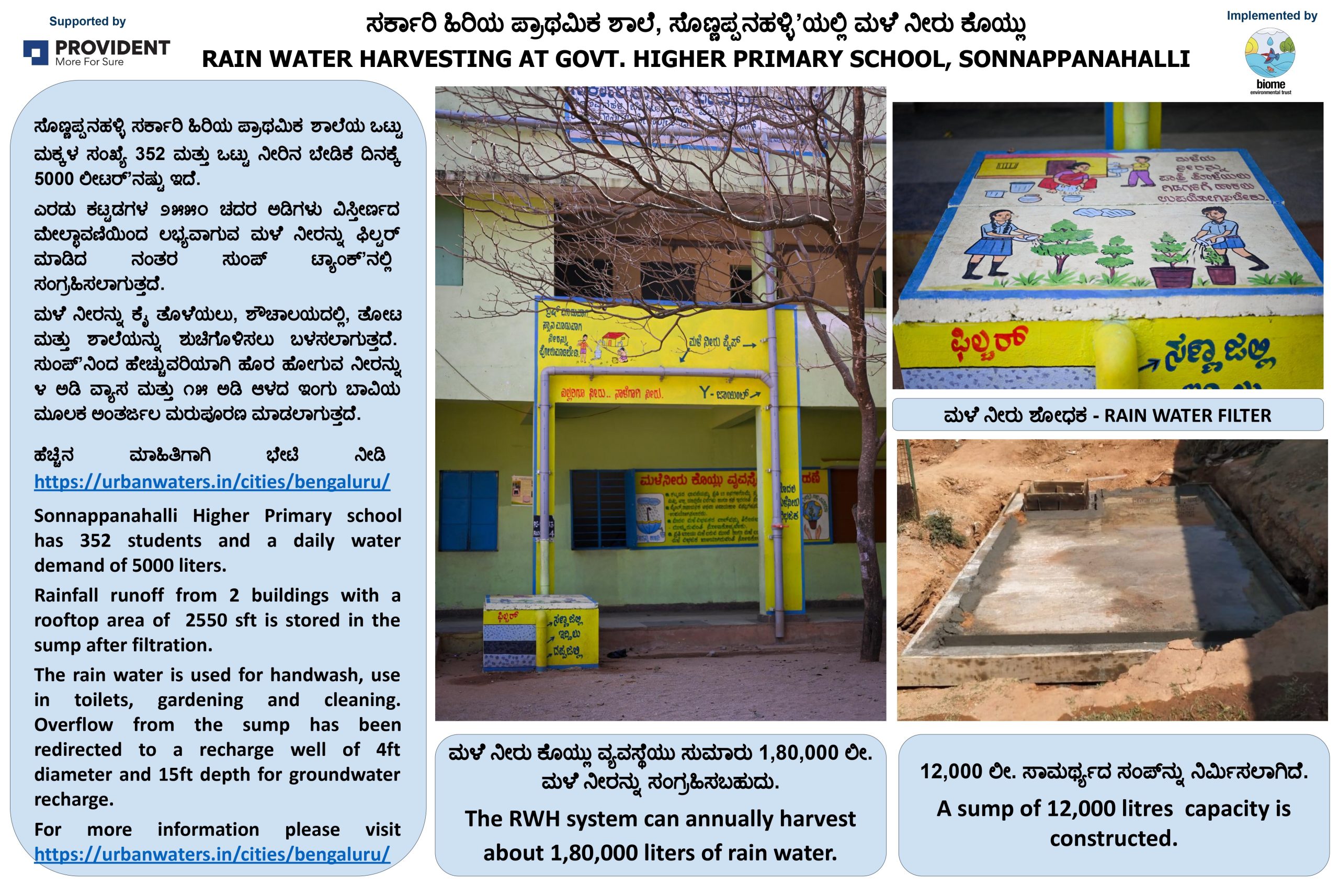A direct use rainwater harvesting system in a residence
About five years ago, Gayatri Pandit set up a Direct Use rainwater harvesting (RWH) system in her home, concerned that too much rainwater was getting wasted. After a good rain, the system is able to meets the water needs of her five-member family.
Located in Richmond Town, at the heart of the city, Pandit’s household has always received BWSSB supply, and rarely suffered from water shortage. Now, as most parts of the city are still awaiting BWSSB supply, Pandit shuts off her existing supply during rains. One good rain can meet the household’s needs for couple of days. “We store and use rainwater whenever it rains. Last year we used rainwater alone for a single stretch of 21 days,” she says.
Rainwater is used for all purposes here. Rainwater is collected in a Sintex tank, filtered and then stored in an underground sump. The Sintex tank was included in the design since the sump’s capacity was too low to hold all the incoming rainwater. BWSSB water is also stored in the same sump, which was built way back in 1985. “During rains we shut off BWSSB supply as the sump cannot hold both rainwater and BWSSB water,” says Pandit. Water used for drinking and cooking is first purified using an Aquaguard filter
“We set up the RWH system as felt that we should do our bit, and now we are very satisfied with it. For maintenance, we get a labourer to clean the barrel twice a year and the filter media once a year. We plan to change parts of the filter media for the first time this year,” she says.
| Catchment Area |
|
| Components |
|
| Description of the implementation | All the storm water washing out points were converted into four storm water collection points. The last collection point was equipped with a FRS, to separate out the first rain. After this, the water flows directly into a 5000 litre capacity Sintex tank, and then into the filter. A hole was made in the existing underground sump to let in the filtered water. From the sump, water is pumped up to the overhead tank for household usage. |
| Annual RWH potential | About 162 KL (185.8X0.9X0.97) |
| Cost of implementation | 65,000 INR |
| Time taken | Five days |
| Issues at present | None |






